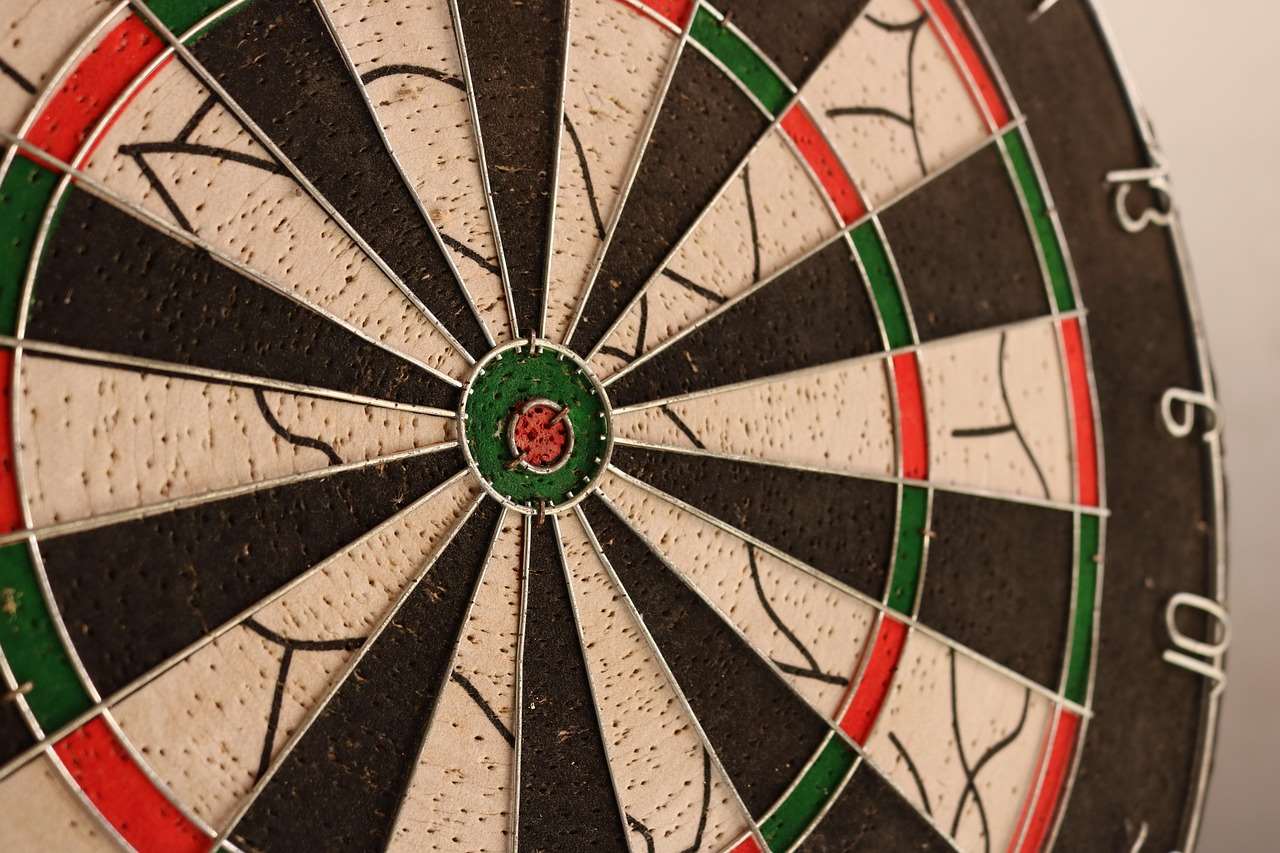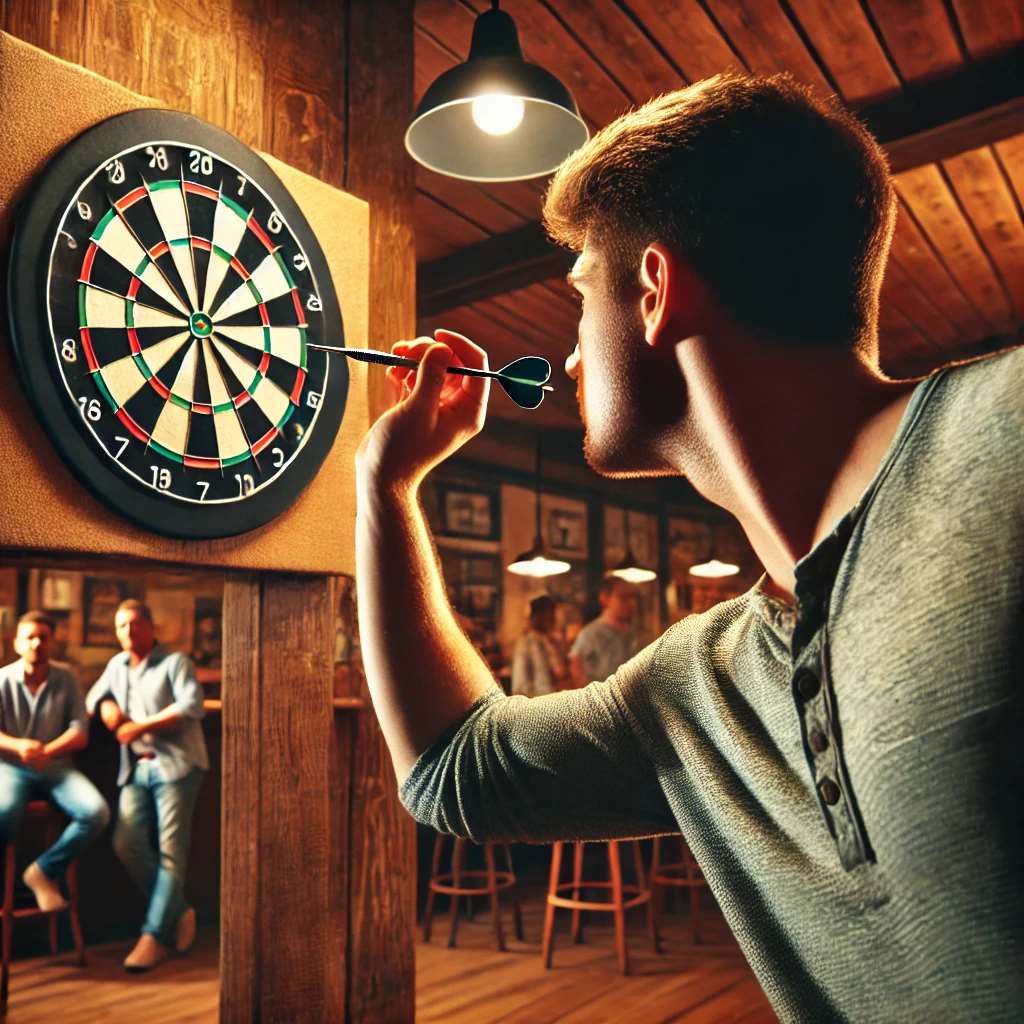Mastering **darts etiquette and tradition** is as crucial as perfecting your throw, ensuring a respectful and enjoyable experience for all players. This article explores the unwritten rules and historical customs that shape the darts community, enhancing your understanding and appreciation of the game.
⚠️ Still Using Pen & Paper (Of een schoolbord)?! ⚠️
Stap in de toekomst! De Dart Teller -app behandelt alle scoren, stelt kassa voor, en volgt uw statistieken automatisch. It's easier than you think!
Probeer de Smart Dart Teller -app gratis!Klaar voor een upgrade? Klik hierboven!
Understanding Darts Etiquette And Tradition
Beyond the skill of hitting the bullseye, darts has a rich tapestry of **etiquette and tradition** that governs player conduct and ensures fair play. Understanding these unwritten rules is crucial for fostering a positive and respectful atmosphere, whether you’re competing in a local pub or a professional tournament. These traditions are more than just formalities; they reflect a shared understanding and appreciation for the game.

Respect for Opponents
One of the cornerstones of **darts etiquette** is showing respect to your opponents. Dit omvat:
- Avoiding distractions: Refrain from making noise or unnecessary movements while your opponent is throwing.
- Complimenting good throws: Acknowledge skillful shots, even if they are made by your opponent.
- Accepting defeat gracefully: Win or lose, maintain a positive attitude and offer a handshake.
Respect extends beyond the throw line, encompassing general sportsmanship throughout the game. This creates a more enjoyable environment for everyone involved and reinforces the positive aspects of the darts community. You could even look into Darts Culture And Community Guide for more insight on being respectful in the community.
The Throwing Line And Player Conduct
The throwing line, or oche, is a sacred space in darts. There are specific guidelines to follow while at the oche:
The Oche: A Space of Focus
- Standing at the oche: Approach the oche only when it is your turn to throw and avoid crossing it while others are throwing.
- Retrieving darts: Wait for your opponent to finish their turn before retrieving your darts from the board.
- Acknowledging scores: Clearly state your score after each turn to avoid confusion.
Calling the Score Correctly
Proper scorekeeping is also a part of **darts tradition**. Players are responsible for calling out their scores clearly and accurately. Disagreements should be resolved respectfully and, if necessary, with the assistance of a designated scorer or referee. Consider the impact of your actions on the other players.

Chalkers, Scorers, And Referees: Essential Roles
While many casual games are self-scored, more formal matches often involve chalkers, scorers, and referees. Understanding their roles and interacting with them appropriately is vital to upholding **darts etiquette**.
- Chalkers: Responsible for manually keeping track of scores on a chalkboard (less common now).
- Scorers: Use electronic scoring devices to record scores and calculate remaining points.
- Referees: Ensure fair play, resolve disputes, and enforce the rules of the game.
Treat these individuals with respect, as they contribute significantly to the integrity and smooth operation of the match. If you are looking for help with Organizing Local Darts League, make sure you provide them with ample information.
Darts Attire: Tradition And Respect
While strict dress codes are less common in casual settings, professional tournaments often have specific attire requirements. Even in less formal environments, dressing respectfully is a sign of professionalism and appreciation for the game. Consider the venue and the level of competition when choosing your attire. Showing up in appropriate attire reflects well on you and the sport of darts. You should also think about Promoting Local Darts and making sure players are in the proper attire.
Professional Attire
In professional tournaments, players are typically required to wear:
- Collared shirts or dart shirts
- Dress pants or tailored trousers
- Closed-toe shoes
Casual Attire
In casual games, the attire is usually more relaxed. Echter, it’s still a good idea to avoid overly casual clothing such as:
- T-shirts with offensive graphics
- Shorts
- Open-toe shoes
The Unwritten Rules of Darts
Beyond the official rules, there’s a collection of unspoken customs and practices that contribute to the **tradition of darts**. Adhering to these unwritten rules demonstrates your understanding of the game’s cultural nuances and your respect for fellow players. These are some of those rules:
- No coaching: Avoid giving advice to players while they are competing, unless specifically requested.
- No excessive celebration: Celebrate your successes modestly and avoid gloating or taunting your opponents.
- No blaming equipment: Avoid blaming your darts or the board for poor throws.

Darts Language and Terminology
Familiarizing yourself with common darts terms and phrases can enhance your understanding of the game and make you feel more connected to the **darts culture**. Using proper terminology shows that you are knowledgeable and respectful of the game. Here are some key terms:
- Ton: A score of 100.
- Ton 40: A score of 140.
- 180: The highest possible score with three darts (three treble 20s).
- Bullseye: The center of the dartboard, worth 50 points.
- Dubbele: The outer ring of the dartboard, doubling the value of the number.
- Treble: The inner ring of the dartboard, tripling the value of the number.
Use these terms accurately and appropriately when discussing the game with other players.
Darts History And Its Impact On Etiquette
Understanding the history of darts can provide valuable context for understanding its **etiquette and tradition**. The game has evolved significantly over time, and many of its current customs have roots in its historical development. A rich past informs present practices.

A Brief History
Darts originated in medieval England as a pastime for soldiers. Na verloop van tijd, it evolved from a simple pub game into a competitive sport with a global following. The game’s history has shaped its cultural identity and its emphasis on fair play and sportsmanship. The game has continued to grow in popularity, encouraging others to engage in Recruiting Members Darts League Club.
The Enduring Traditions
Many of the **etiquette and tradition** observed today can be traced back to the game’s historical roots. The emphasis on respect, fair play, and proper conduct reflects the values that have been central to the darts community for centuries.
Adapting to Different Darts Environments
While the core principles of **darts etiquette and tradition** remain consistent, it’s important to adapt your behavior to different playing environments. The expectations for conduct may vary depending on the setting, whether it’s a casual pub game, a local league match, or a professional tournament. To continue to develop this game you should look into How To Start A Darts League, so it can grow more.
Pub Games
In a casual pub setting, the atmosphere is typically more relaxed. Echter, it’s still important to be respectful of other players and maintain good sportsmanship.
League Matches
League matches tend to be more structured and competitive. It’s important to adhere to the specific rules and regulations of the league, as well as the generally accepted **etiquette** guidelines.
Professional Tournaments
Professional tournaments have the highest standards for conduct and attire. Players are expected to conduct themselves professionally at all times and adhere to the tournament’s code of conduct. Regardless of the environment, always strive to uphold the principles of fair play and respect.
Conclusie
Understanding and adhering to **darts etiquette and tradition** is essential for creating a positive and respectful environment for all players. By demonstrating respect for your opponents, following the unwritten rules, and familiarizing yourself with the game’s history and terminology, you can enhance your appreciation for darts and contribute to its vibrant culture. Embrace the **traditions**, practice good sportsmanship, and enjoy the camaraderie of the darts community. Now that you’re equipped with this knowledge, go out there and put your best foot forward. Join a league, a club, or even just play with friends, and remember to respect the game and its players. Discover how you can contribute to a positive and respectful darting environment by exploring resources such as Building Local Darts League Club Guide and implementing these principles in your local games!
Hoi, Ik ben Dieter, En ik heb Dartcounter gemaakt (Dartcounterapp.com). Mijn motivatie was geen darts -expert - helemaal tegenovergestelde! Toen ik voor het eerst begon te spelen, Ik hield van het spel, maar vond het moeilijk en afleidend om nauwkeurige scores te houden en statistieken te volgen.
Ik dacht dat ik niet de enige kon zijn die hiermee worstelde. Dus, Ik besloot om een oplossing te bouwen: een eenvoudig te gebruiken applicatie die iedereen, Ongeacht hun ervaringsniveau, zou kunnen gebruiken om moeiteloos te scoren.
Mijn doel voor Dartcounter was eenvoudig: Laat de app de nummers afhandelen - het scoren, de gemiddelden, de statistieken, Zelfs checkout suggesties - zodat spelers puur kunnen richten op hun worp en genieten van het spel. Het begon als een manier om het probleem van mijn eigen beginners op te lossen, En ik ben heel blij dat het is uitgegroeid tot een nuttig hulpmiddel voor de bredere darts -community.